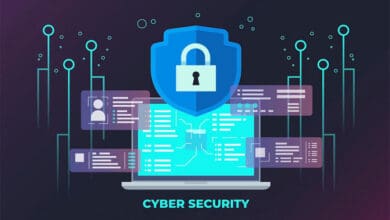
In today’s digitally accelerated world, cloud infrastructure and storage are becoming more popular for businesses and organizations. 90% of the participant companies in a survey said they now use cloud computing and storage for their business data. Others plan to switch to cloud-native technologies within the next three years.
This extensive base of cloud users presents unique security concerns and threats. These threats are now becoming more potent than ever, owing to the multi-cloud environment and its complexity. Traditional security solutions no longer provide suitable security against such threats. That’s where a robust security system such as Cloud security posture management or CSPM comes in.
CSPM constantly models the security environment, identifies potential misregulations and vulnerabilities, and gives off relevant alerts and notifications in real-time. In this article, we’ll delve into how you can make the most out of managing cloud security posture for your organization’s data security.
Understanding Your Responsibility
Before you choose your Cloud Security Posture management system, you must understand why you’re getting this additional layer of security. Cloud infrastructures are pretty complex, and identifying what your cloud service provider (CSP) will do and what you’re responsible for is often helpful.
For security, cloud service providers, like AWS, Azure, and Google Cloud, are responsible for the infrastructure, and you’d be responsible for data and its configuration. Remember that your CSPM controls must be CSP-compatible and specific to ensure your system follows the security best practices for the service you’re using.
Implement Identity and Access Management
IAM, or Identity and Access Management, is a critical step to enhance your cloud security posture. It means that individuals have the right degree of access that they need to the available cloud resources. That prevents any unsolicited breaches and grants access to relevant data only.
You can set the roles and responsibilities for your employees, third-party vendors, and other administrative staff. Then, with robust IAM solutions that your cloud service provider offers, such as AWS IAM, Azure Active Directory, Google Cloud IAM), or a third-party IAM provider, you can implement multi-factor authentication (MFA systems with strong password policies to make sure all data remains protected, regardless of the channels it’s going through. By assigning Role- Based Access Control (RBAC) and Segregation of Duties (SOD), you’ll have a centralized system to moderate all activity for your organization on the cloud.
Multi-cloud Incorporation and Adopting New Cloud Security Features
According to one survey, 87% of all cloud-using companies now have a multi-cloud complex infrastructure running for their company, which is very likely to increase. If you’re one of these companies, you must implement consistent security measures across your clouds. The way to do that is to choose a CSPM that supports multi-cloud infrastructure to keep a consistent security posture across the board. That way, the CSPM capabilities won’t be fragmented, and all security risks will be mitigated throughout the system.
Remember, multi-cloud or not, CSPM is an emerging and evolving cloud security system, which might look completely different in a few years. With containers, serverless computing, and software-defined networking occurring, there are new features to embrace daily. It’s often a good idea to keep up with the changing trends in technology and cloud efficiency or security as you make the most out of CSPM infrastructure.
Strengthen Infrastructure as Code (IaC) Security
IaC, or Infrastructure as Code, is becoming remarkably popular in the IT industry regarding securing cloud posture and automating operations within a business. IaC is the practice of defining and managing cloud infrastructure and resources through machine-readable code. But it comes with its security concerns. Your organization can be exposed to unauthorized access, data breaches, misconfigurations, and vulnerabilities just by slight changes in the machine code. That’s where cloud security posture management can help.
CSPM programs can often scan IaC templates for errors and fix misconfigurations before the code is deployed on the cloud. This reduces the chances of mistakes when the IaC runs, ensuring better security and risk management.
CSPM aside, you can also use specific manual measures during development to ensure your code, such as code reviews, encryption, validation and linting, and testing from time to time. Enforcing code reviews before deployment can catch any errors in the script’s run before deployment. That acts as an additional security check alongside the CSPM program checks. Encryption, both at rest and in transit, will also ensure that data access is authorized and doesn’t face any breaches. Testing with tools like Terraform’s ‘tfsec’ or AWS’s CloudFormation Guard can also play a crucial role in adding another check to IaC before running.
Endnote
Cloud security is a shared responsibility between your company and the cloud service provider. While it might not fall on you entirely, you need to stay updated on potential threats to your cloud infrastructure, the newest offerings by your cloud service provider, available automation mechanisms, and possible security breaches.
Determining which cloud service provider or CSPM process will fit your multi-cloud infrastructure needs would be best. You also need to ensure that your Identity Access Management (IAM) and Infrastructure as Code (IaC) systems do not have loopholes that could result in possible security issues for your organization. By continuously monitoring your environment and staying on top of potential security threats, you can make your company’s operation on the cloud smooth and raise your operations efficiency and the overall credibility of your work output.



